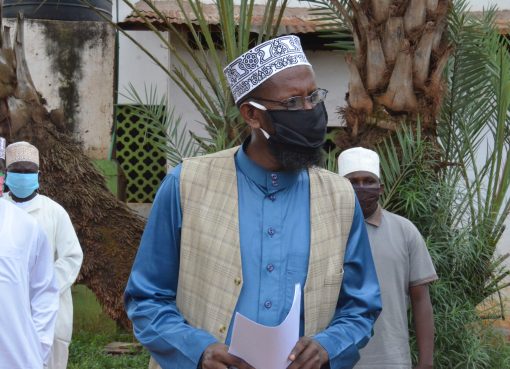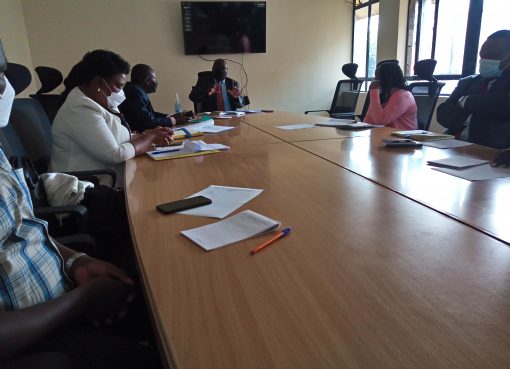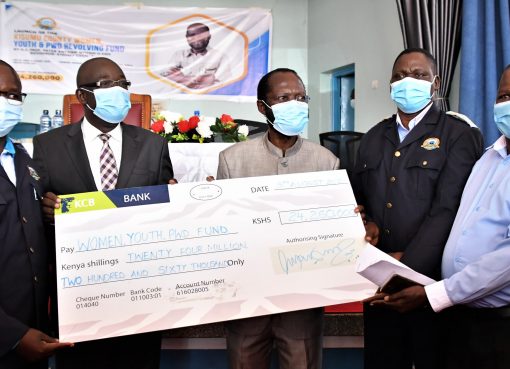For close to two decades, Lazzaro Ole Saibulu was actively involved in the livestock trade across the Kenyan and Tanzanian border.
In his heyday, the 52-year-old was also a revered owner of over 200 goats and 120 head of cattle that besides guaranteeing him a steady income also propped up his high social standing among his peers.
Due to persistent droughts that perennially wiped out his flock, Saibulu’s sole economic mainstay was disrupted. With the size of the flock gradually shrinking, the herder decided that the only way to save his livelihood was to change his occupation and relocate to ‘greener pastures’.
Despite the pitfalls, the former big time livestock trader has picked up the pieces and pitched tent at the heart of Nakuru Central Business District, where he stocks and ‘prescribes’ herbal medicine at a fee.
“There was no other way to get over my predicament. I had to make a difficult decision. I just gave up. The countless animals that were dying from drought dipped my financial well-being,” Ole Saibulu recounts with a crestfallen expression.
He continues “selling herbal medicine is my new salvation. At least I get enough money to pay for my children’s school fees and for the sustenance of my family and a few livestock that remained”,
Almost fifty kilometers away at Mau-Narok within Njoro Sub-County, Sadera Ole Teum who had in the past despised farming for livestock keeping now grows cabbages.
“We can no longer rely on cattle for a living. Today it is not uncommon to find young Maasai Morans in unfamiliar territory:-hawking sandals, leather belts, beaded bracelets and necklaces and herbal medicine”.
Ole Teum says frequent droughts and the ever shrinking land sizes have transformed pastoralism into an unsustainable venture in Narok and Kajiado Counties resulting in an unprecedented rise of Moran hawkers in the country’s major urban centres.
“In our culture, a community member’s wealth and social standing is pegged on the size of his livestock herd. However the reality is that we can no longer rely on cattle for a living as worsening drought linked to climate change has scorched out the pastures we depend on.
That explains why a growing number of pastoralists are either turning to entrepreneurship or agriculture for extra income,” noted Ole Teum.
Mary Seleina, a university student however, holds that deeply embedded cultural customs among the Maasai are slowly but gradually being eroded by modern education and urbanisation in regions populated by the community.
“With the introduction of formal education, most members of the community now have to sell their cattle to pay for their children’s school fees, buy them school uniform and cater for other basic needs at home.
The younger generation no longer places high premium on livestock and do not engage in cattle rustling activities previously used as a means to replenish dwindling stocks. Most are now prominent businessmen or professionals engaged in the civil service and private sector and their social standing is influencing other community members to abandon pastoralism,” she said.
She continues “Few Kenyans have noticed that as the Maasai reduce their herds they have started embracing zero grazing and are rearing hybrid cows. Efforts by National and County governments, community based organisations and non-governmental organisations are bearing fruit.
Former pastoralists are now cultivating potatoes, sorghum, sukuma wiki, cabbages, onions and tomatoes. For instance the Kajiado County government has constructed 500 water pans to harvest rainwater for use by herders to irrigate crops, It has also started supplying herders with high-yielding crop seeds and training farmers on sustainable cultivation techniques, including more efficient water use,” says Seleina.
Along Kenyatta Avenue within the Central Business District, Grace Spanto concurs that education is gradually ‘liberating’ the younger Maa community members including women. Though Spanto maintains that she is modestly educated, she converses effortlessly in French with a group of tourists who drop by her curio stall.
“Most Maasai women are now selling kiondos, sandals, beaded necklaces and bracelets in major towns and near national parks and reserves.
Though some of them speak foreign languages fluently they have never stepped into a classroom. This effectively means our traditions are being transformed due to interactions and external influence.
Traditional attitudes that regarded the Maasai man as the sole bread winner have changed. That is why entrepreneurs have emerged from the community and are visibly engaged in business ventures countrywide” explains Spanto.
Antony Ole Twala, a pharmacist holds that pastoralism as a lifestyle has changed because the formally communal land has been subdivided, and some of it has either been developed or fenced off pending development.
“In my youth we could herd our animals on any part of Narok without obstacles. Pastureland was first demarcated and later subdivided into smaller plots, most of them sold to individuals who have already and are still investing in real estate following increased demand for land due to expanding towns and population pressure.
I believe more than 60 percent of the entire Narok County is now private land that is not open for grazing,” says the 47-year-old pharmacist.
A study conducted under the Pathways to Resilience in Semi-arid Economies (PRISE) project, reveals that between 1997 and 2015, Kajiado County’s cattle population reduced by 41.7 per cent, and apart from land privatization, the scientists also attributed the decline to the changing climatic conditions.
The study further observed that temperatures in Kajiado have increased by 1.48Centigrade in the past 50 years, which is badly affecting survival of cattle, the county’s main source of livelihood.
Projections indicate that the county’s temperatures are going to increase by 1.0Centigrade by 2030.
By Anne Mwale/Joyce Kishoyian




